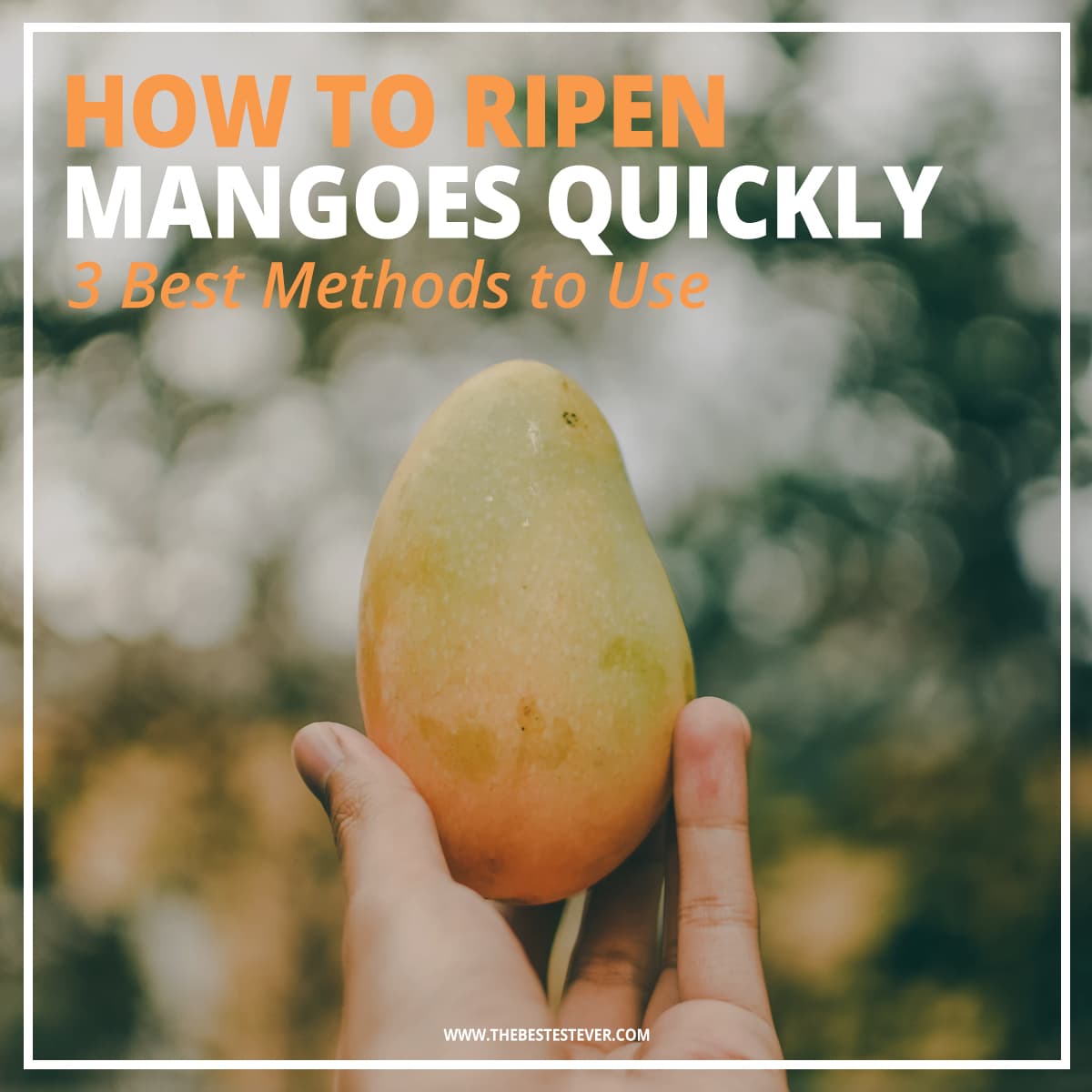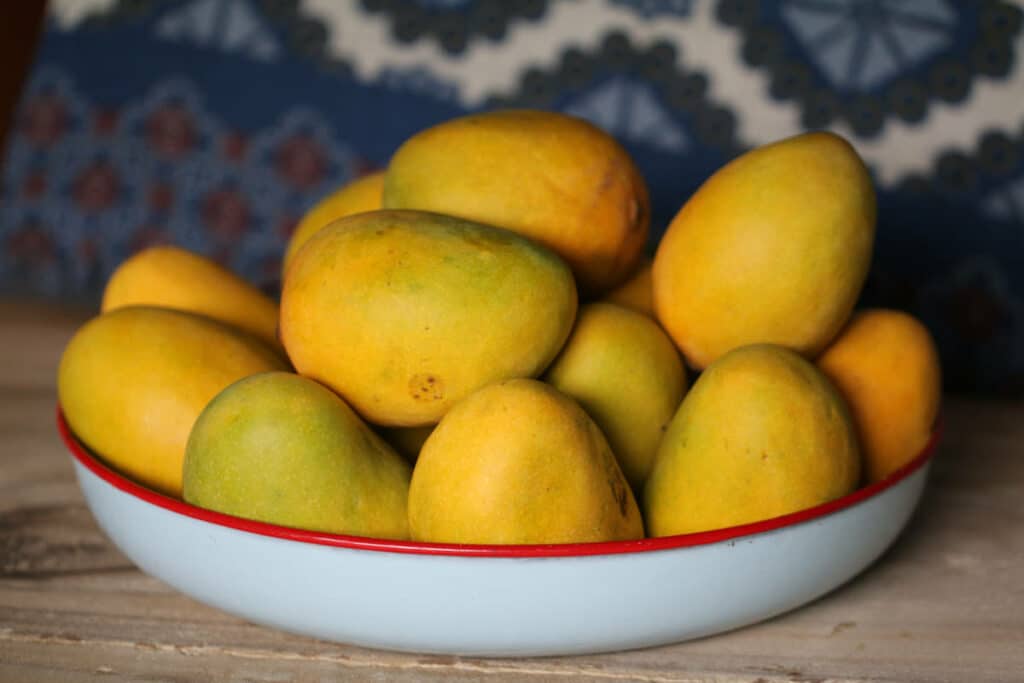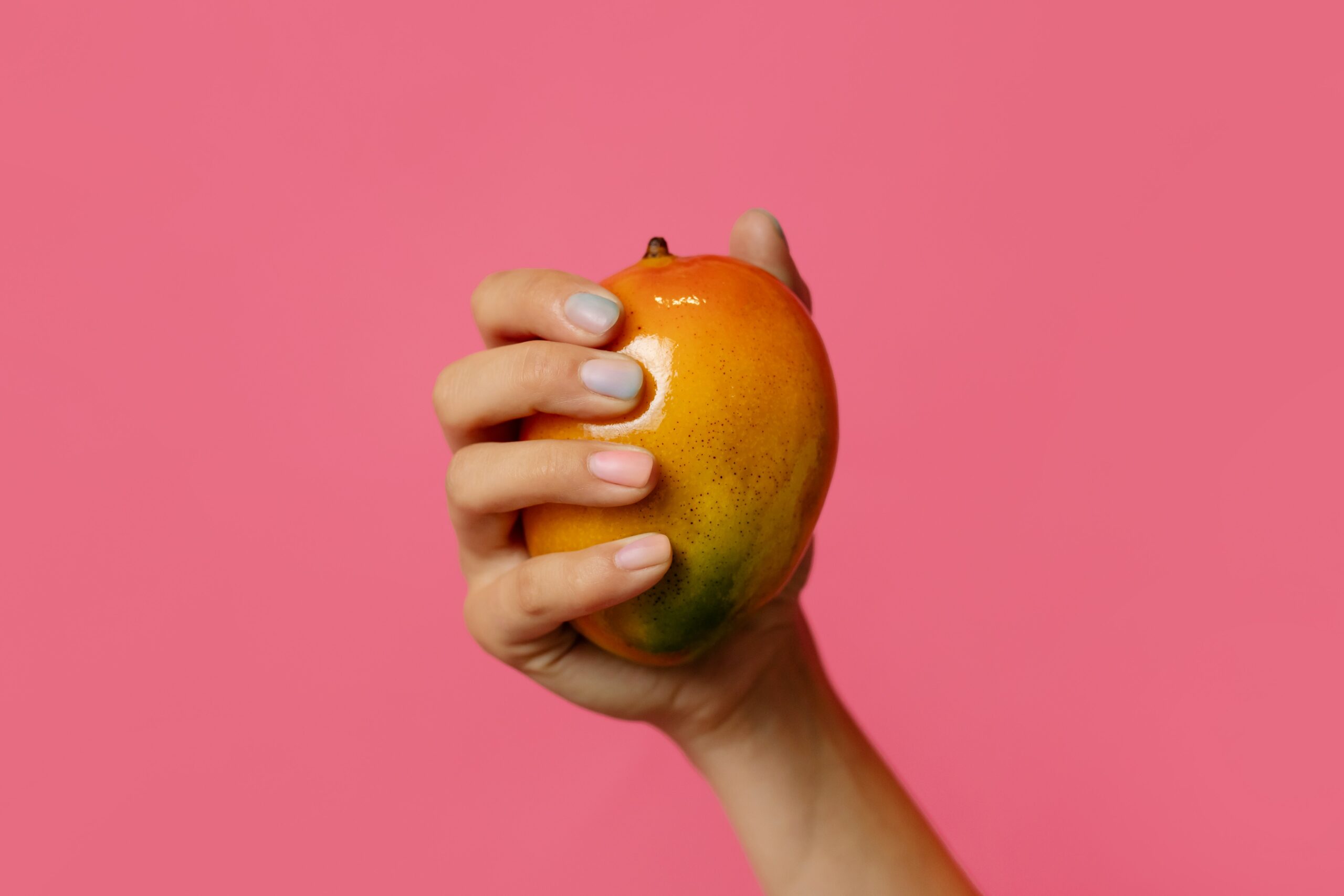
Mangoes are seasonal tropical fruits that grow well in Central America and the Caribbean region. The fruit comes in varying shapes and sizes, and there are dozens of varieties depending on where you are in the world.
Because ripe mangoes can be soft and fragile, the fruits are generally sold commercially before they start to ripen.
But what if you just can’t wait to enjoy your mangoes? How do you speed up the ripening process?
Well, there are actually a bunch of ways in which you can ripen your mangoes faster.
Continue reading below as we explore some tried and tested methods for ripening mangoes.
How Do You Know When Mangoes Are Ripe?

Ripe mangoes are juicy and soft with a sweet and strong taste. The fruit can be eaten as is, or it can be used to make juices, smoothies, jams and a vast array of other foods. Mangoes are extremely rich in Vitamin C, and so they make a healthy snack.
So how do you know when mangoes are ripe?
Gently Squeeze Them
One of the best ways to test a mango for ripeness is to squeeze it gently with your thumb. Mangoes have soft skins and even softer flesh when ripe.
If your mango is ripe, it should feel soft to the touch but still slightly firm. If the mango is super soft where you’re finger leaves an indentation, then your mango might be overripe.
Smell Them
The second way to tell a ripe mango is through smell. Ripe mangoes are very fragrant, and give off a strong sweet smelling aroma that should hit your nostrils as soon as you get close to the fruit.
The smell will be even stronger if you have multiple fruits in the same location.
Look at the Mangoe’s Skin Color
The final way that could be used to distinguish the ripe from the unripe fruit is through its skin color. For most varieties of mangoes, the skin will become golden yellow or a combination of yellow, orange and red hues when ripe. Some varieties however are still green when ripe.
They are usually a lighter shade of green when ripe, however. Others can be purple or red, so one can easily mistake a ripe fruit for an unripe one.
You Might Like: How to Ripen Papayas
3 Best Ways to Ripen Mangoes Faster

While most people consume mangoes when they are ripe, the green variety is also edible. It can be used in stews and eaten with salt.
In many cultures green mangoes are used as remedies to treat ailments like diarrhea, morning sickness, indigestion and constipation.
Green mangoes are however an acquired taste and are not enjoyed by everyone. Ripe mangoes are much more enjoyable as they are sweet and juicy.
So, if you happen to have green mangoes on hand and want to ripen them quickly, what do you do?
Ripen Them By Placing Them Somewhere Warm or Room Temperature
This is not so much of a hack as it is letting the normal process run its course by giving it a helping hand. Fruits of all kinds tend to ripen faster when it’s warm, rather than cold.
At room temperature, a mango should take at most 4 to 5 days to ripen depending on the stage of readiness it was at when picked.
How to Ripen a Mango in a Paper Bag with a Banana or Apple
This is a well known hack that is tested and true. In many cultures, this has been the go to method for hastening the ripening of fruits for decades.
Place your mangoes in the paper bag at room temperature and check daily for ripeness as the fruits could literally ripen overnight.
This process works because mangoes produce ethylene, which is the enzyme responsible for ripening fruits. Wrapping the fruit in the paper bag traps the ethylene around it, hence fast tracking the process.
A good tip is to add a ripe banana or apple to the bag. These fruits produce a lot of ethylene and this could help to ripen the mango quicker.
Note that you should not close the paper bag entirely as oxygen is still needed for the ripening process.
Ripening in a Container With Rice
This is a trick that’s common in Indian households. India produces a lot of mangoes and rice is also a staple in the country. It’s common for people in this country to put their mangoes in containers of rice and cover the fruit with the staple. This traps ripening gas (ethylene) and thus speeds up ripening.
This is said to be the quickest way to ripen mangoes and works in as little as 12 hours.